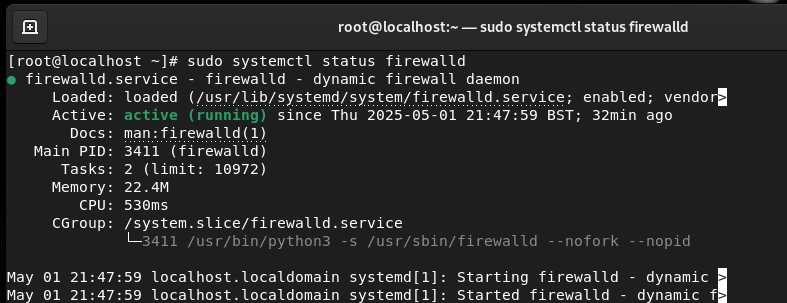It’s Monday morning. You haven’t finished your first coffee, and the boss yells:
“We can’t access the web server!”
You squint at your screen like a hungover raccoon and SSH into the server. Welcome to life as a Linux sysadmin on RHEL 9.
Today, your mission: Fix the firewall, check SSH, and avoid accidentally nuking production.
📚 Table of Contents
- Step 1: “Is This Thing Even Running?”
- Step 2: Peek Behind the Firewall
- Step 3: Let the Web Traffic In
- Step 4: Check SSH Before You Lock Yourself Out
- Step 5: Celebrate with a Log Check
- Why This Stuff Actually Matters
Step 1: “Is This Thing Even Running?”
Let’s see what your firewall is doing. It might be sleeping on the job.
Great, your firewall is alive and well — maybe too well. Let’s check if it’s blocking your traffic like an overzealous nightclub bouncer.
Step 2: Peek Behind the Firewall
Check which zones and services are active. This is like asking your firewall what doors it's guarding.
No http or https? No wonder your site’s ghosting everyone.
Step 3: Let the Web Traffic In
Tell the firewall to stop being such a hermit and allow web traffic:
Boom — doors open, dragons allowed (as long as they speak HTTP).
Step 4: Check SSH Before You Lock Yourself Out
Before you do anything reckless like restarting the firewall or rebooting, double-check SSH is running, or you'll end up locked out like a medieval jester.
Running? Good. If not:
Because nothing says "professional sysadmin" like bricking your own remote server.
Step 5: Celebrate with a Log Check
Check the logs to make sure everything didn’t silently explode behind the scenes:
Look for red flags, weird errors, or secret plots against your uptime.
Why This Stuff Actually Matters
Funny stories aside — these situations happen every single day in the real world. Firewalls misconfigured, SSH services down, ports blocked — it’s all part of the sysadmin life.
Understanding how to use systemctl, manage firewalld, and troubleshoot services on RHEL 9 is crucial not just for passing certifications, but for actually doing the job. Reading theory is great, but real-world scenarios like this one solidify your knowledge and build confidence.
By getting hands-on, you’re not just studying — you’re becoming the person companies call when everything goes sideways. And trust me, they will go sideways.








Top comments (0)